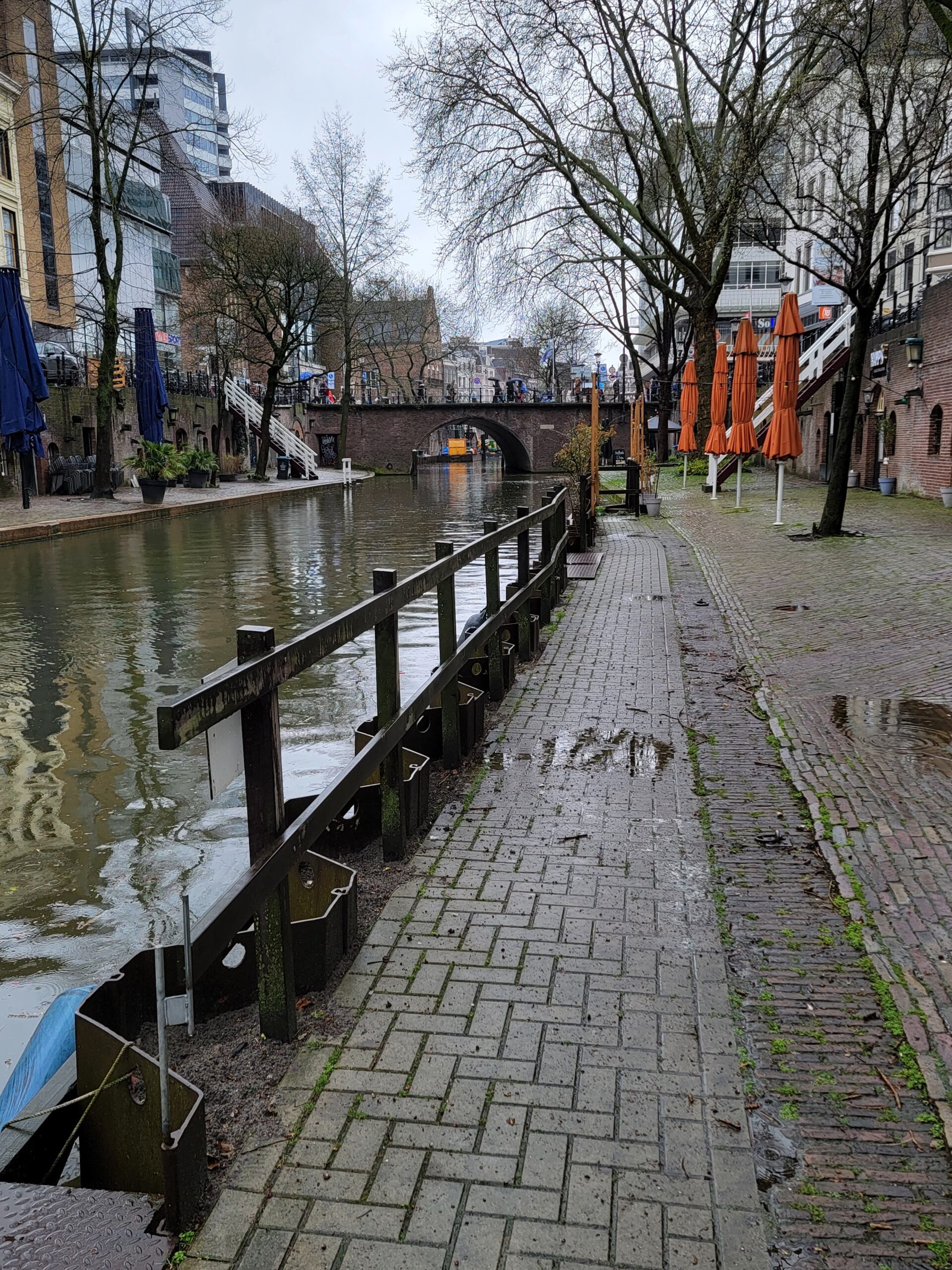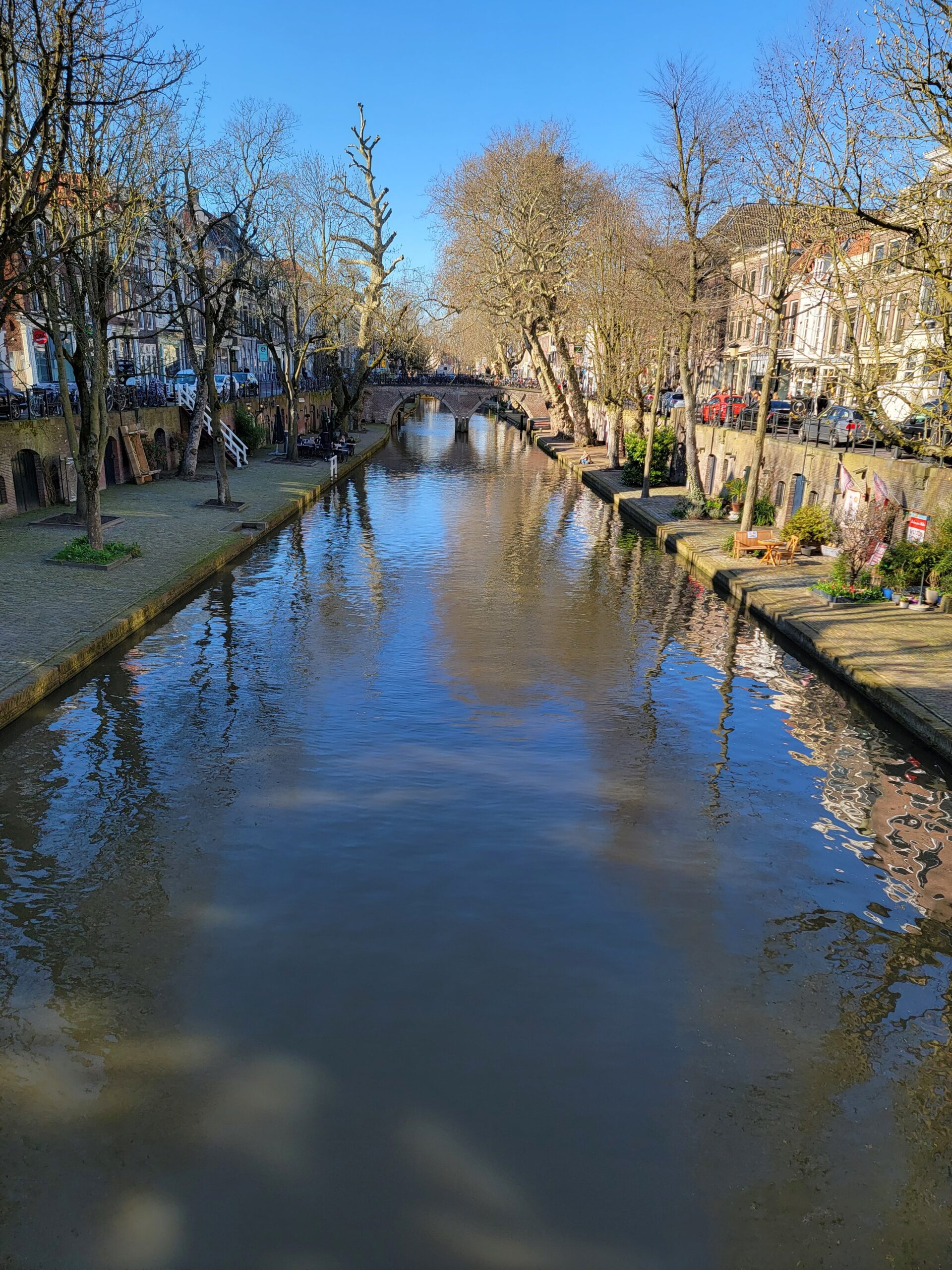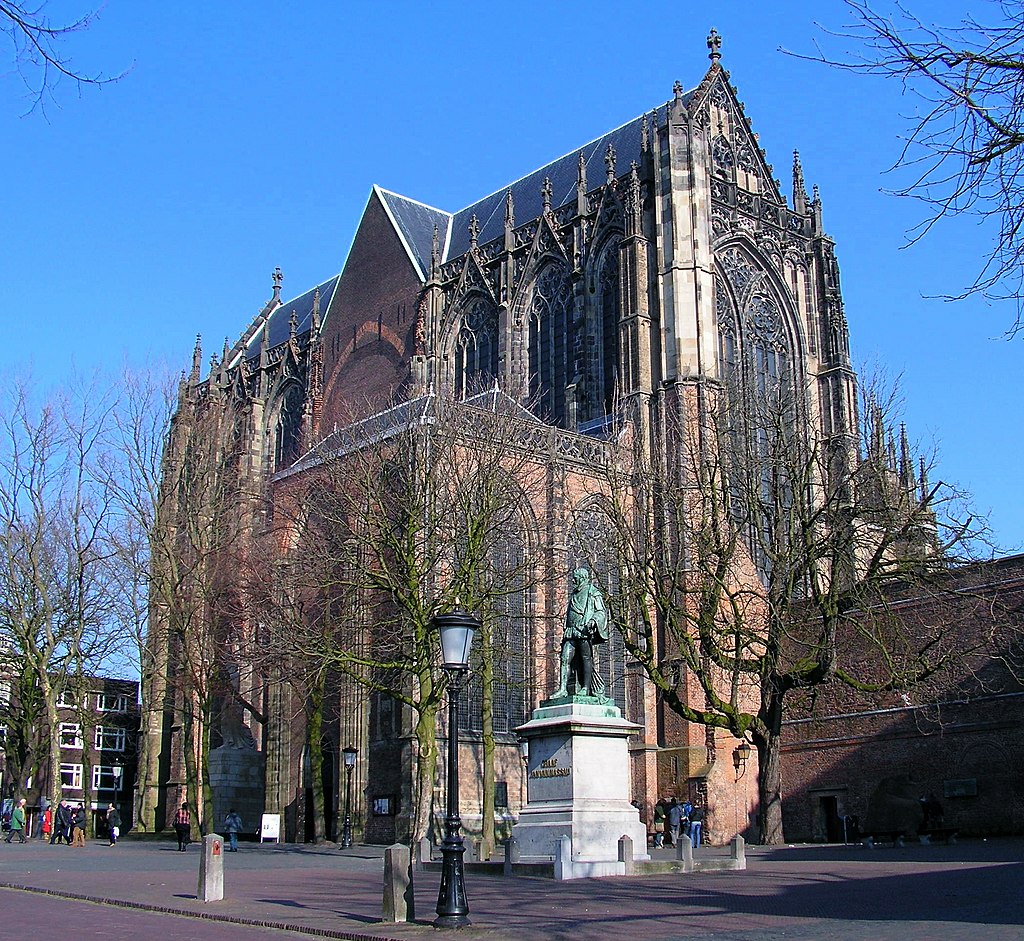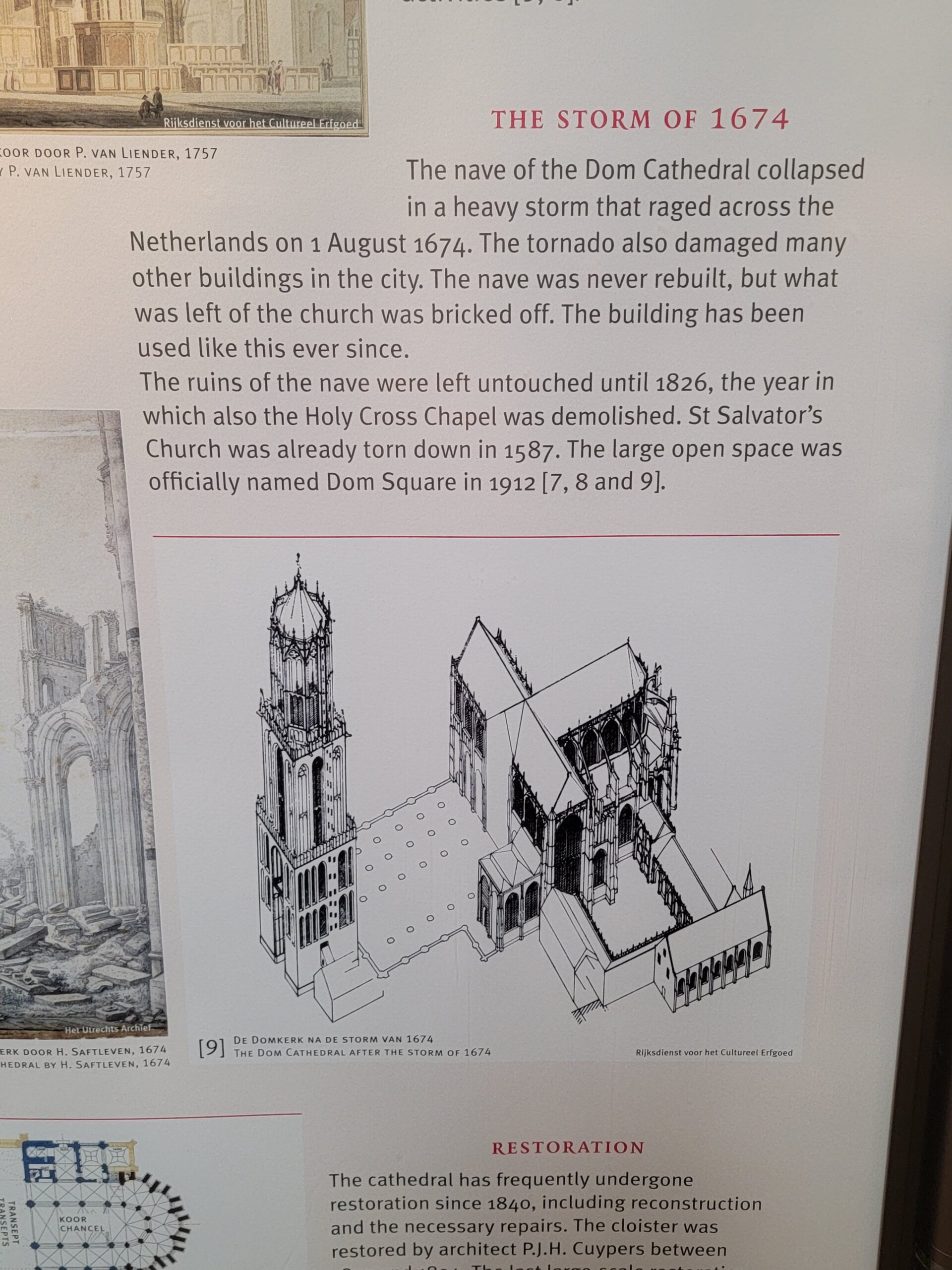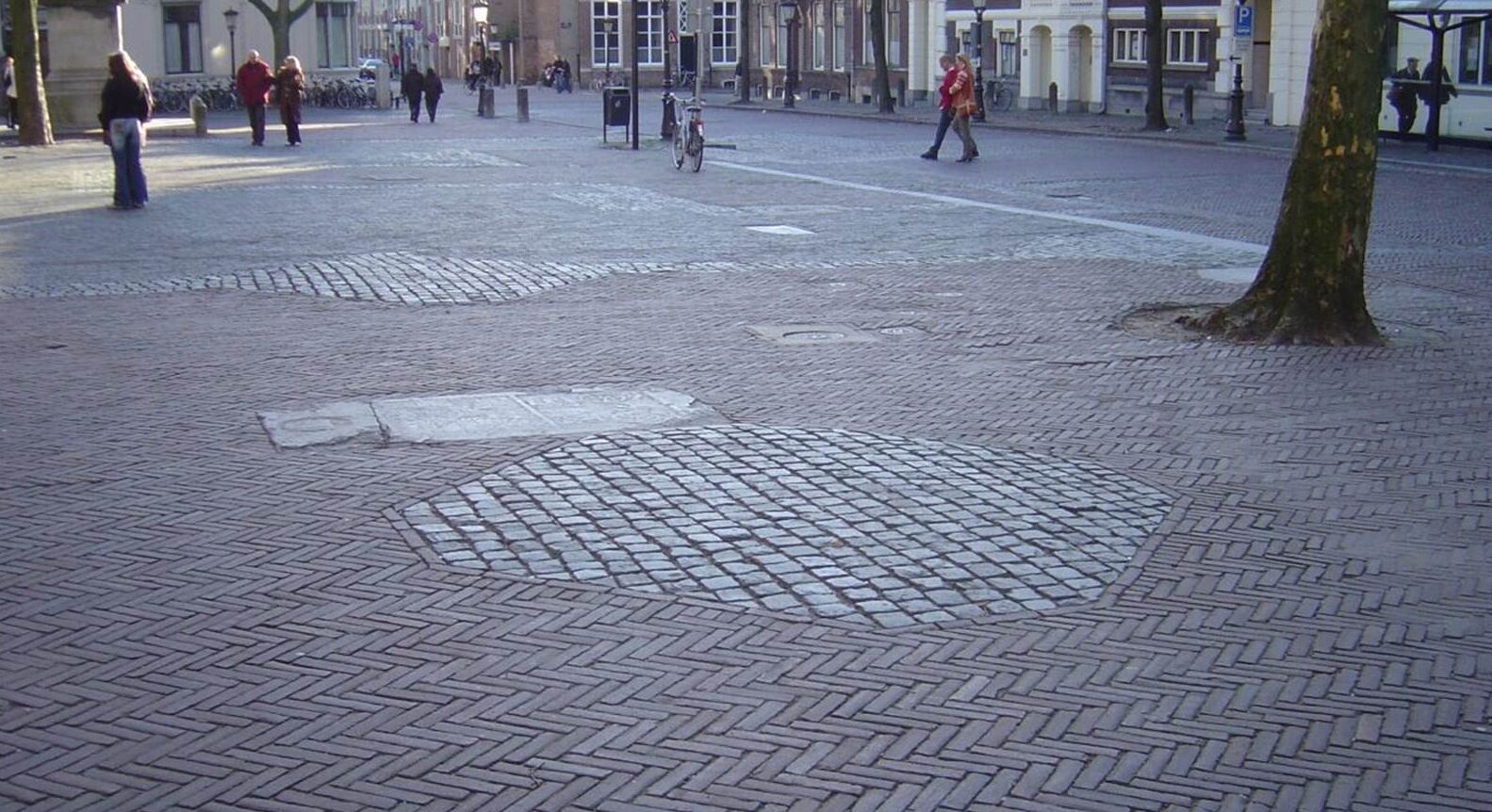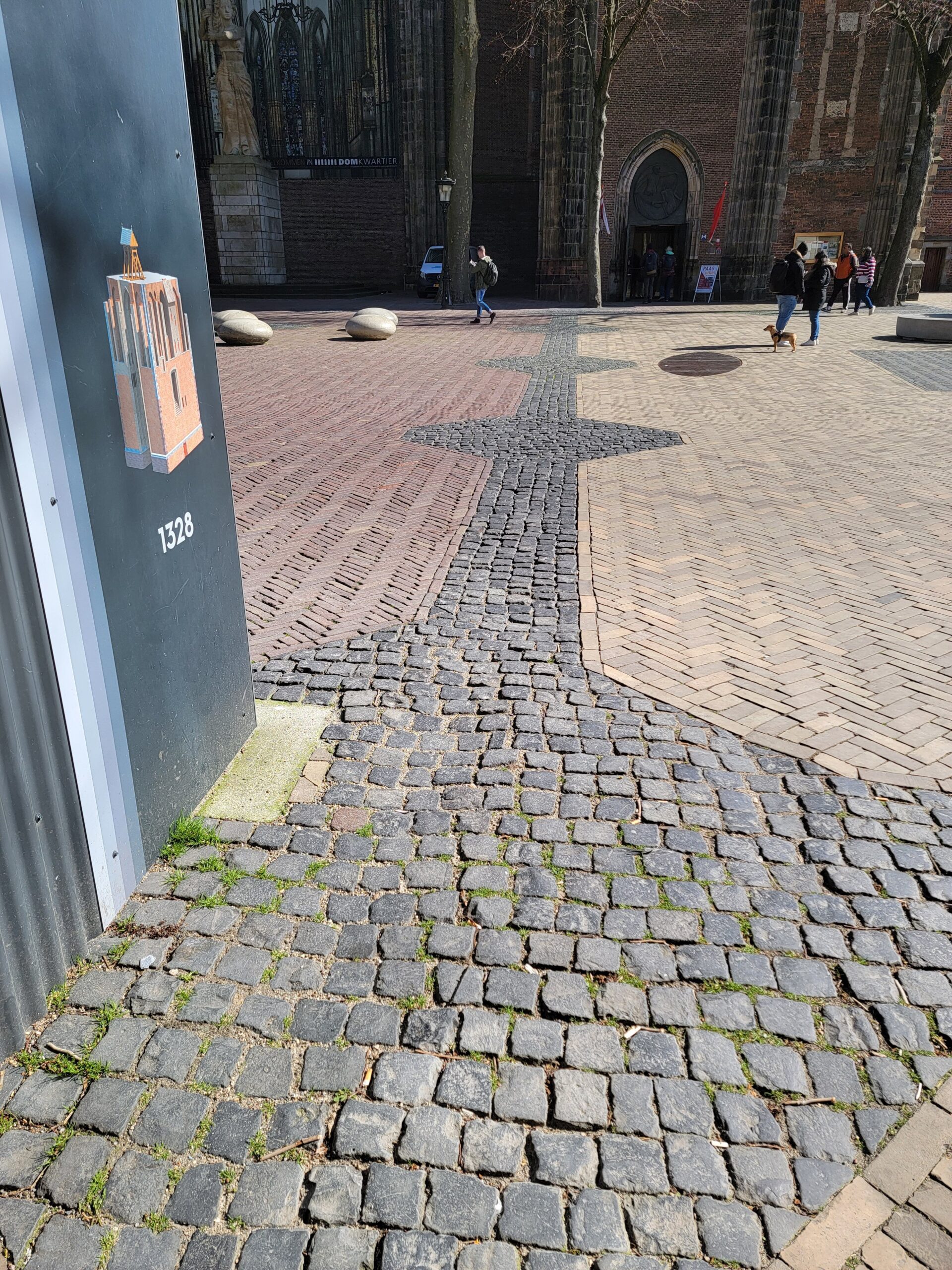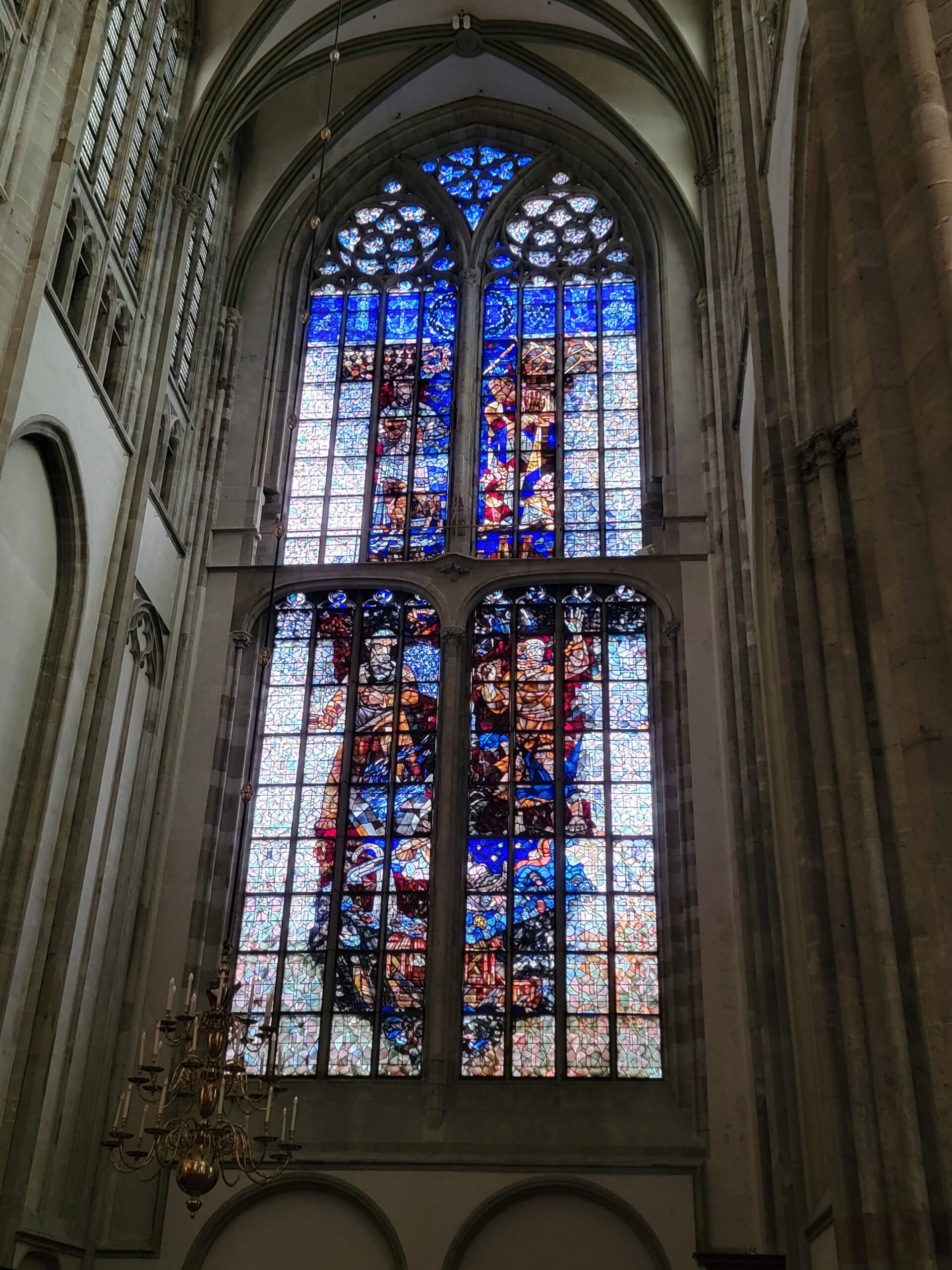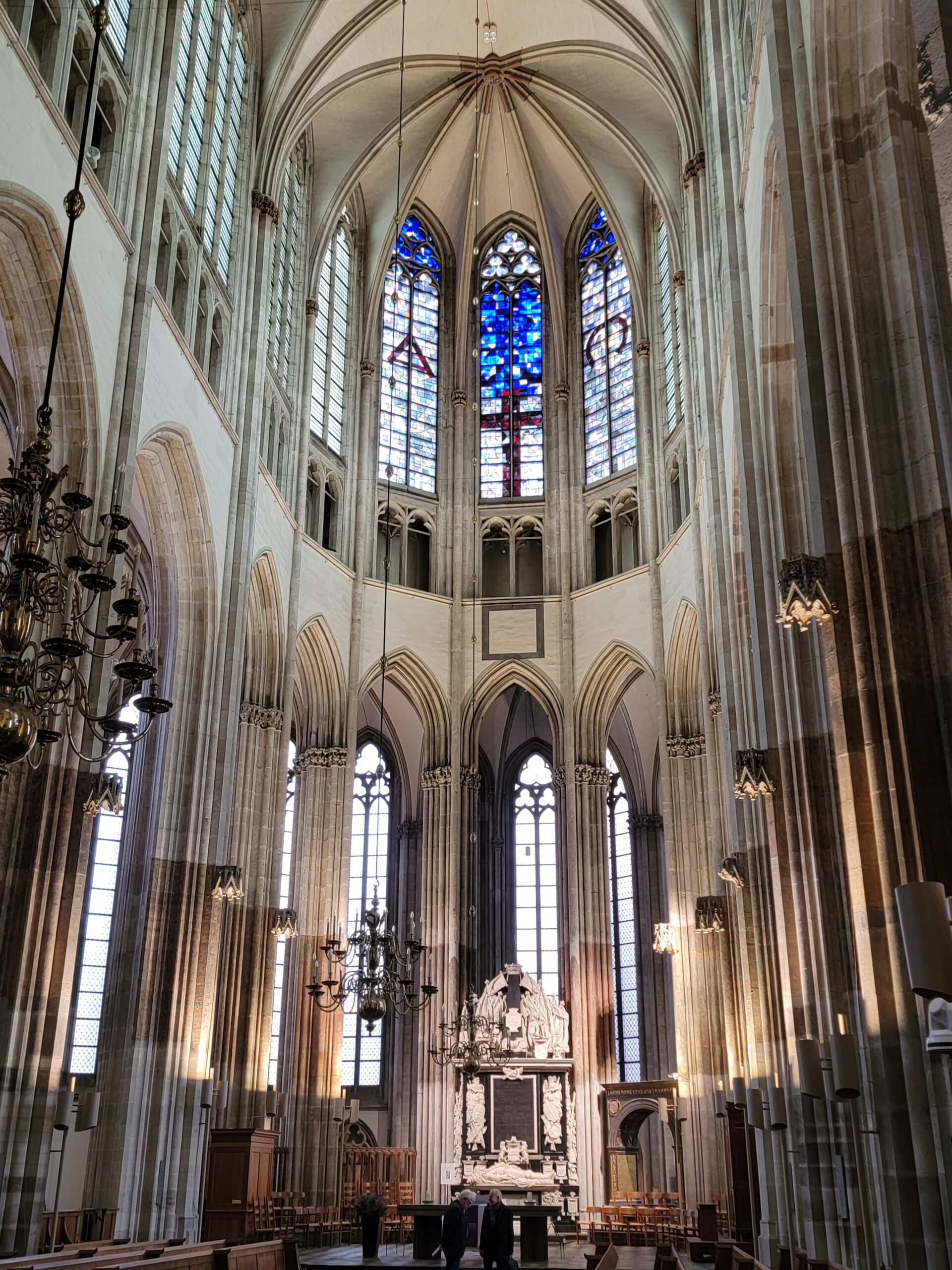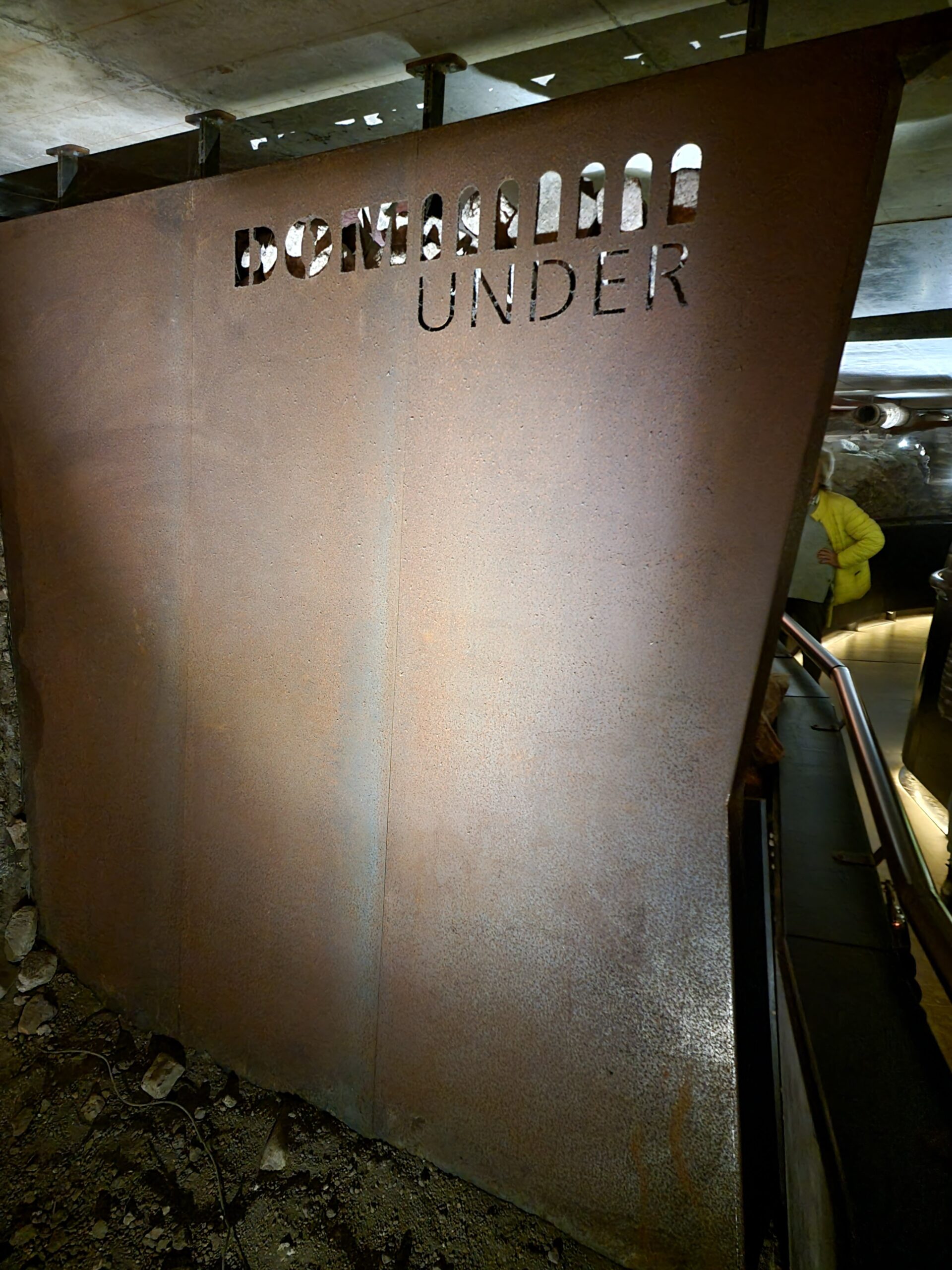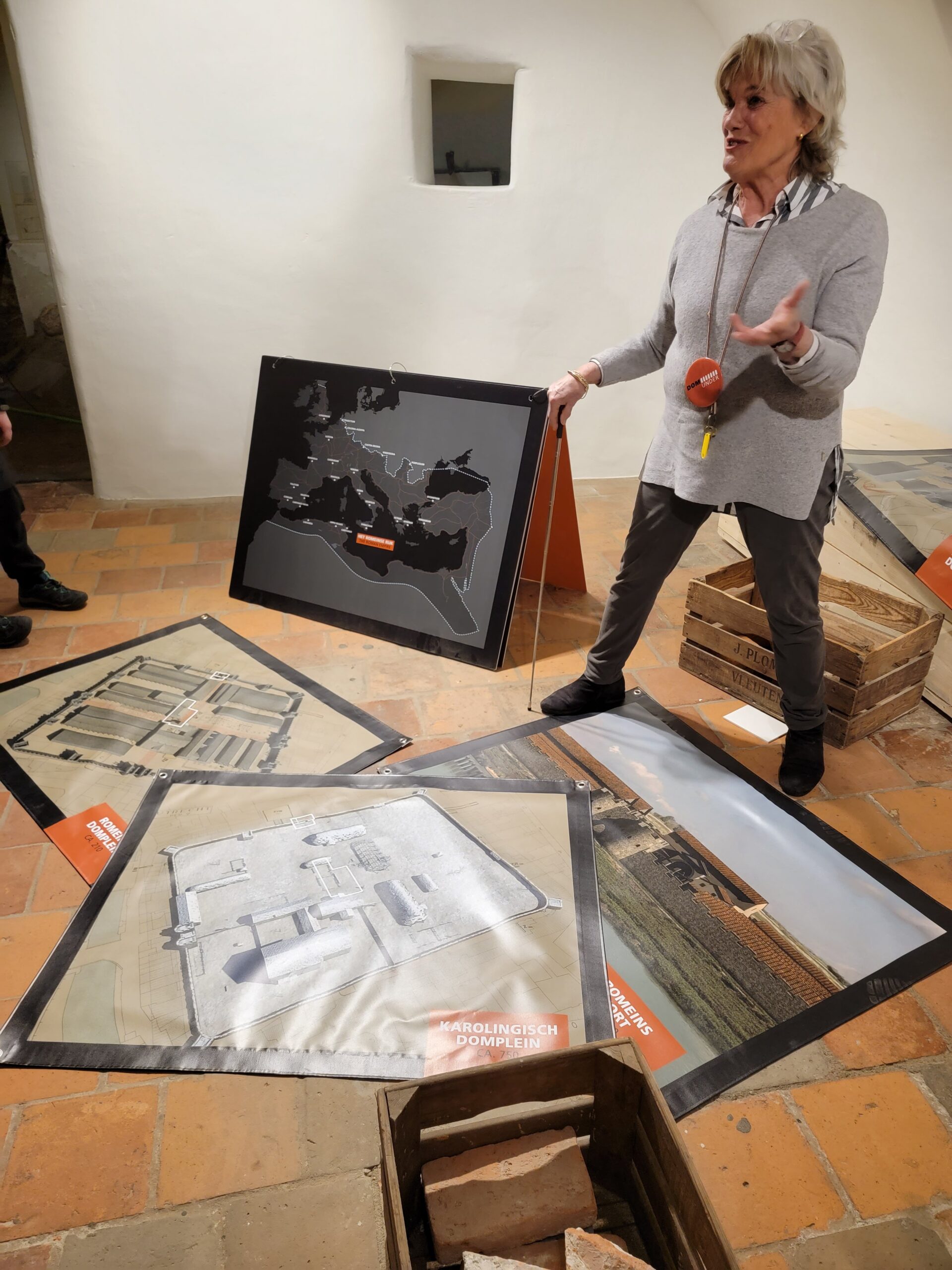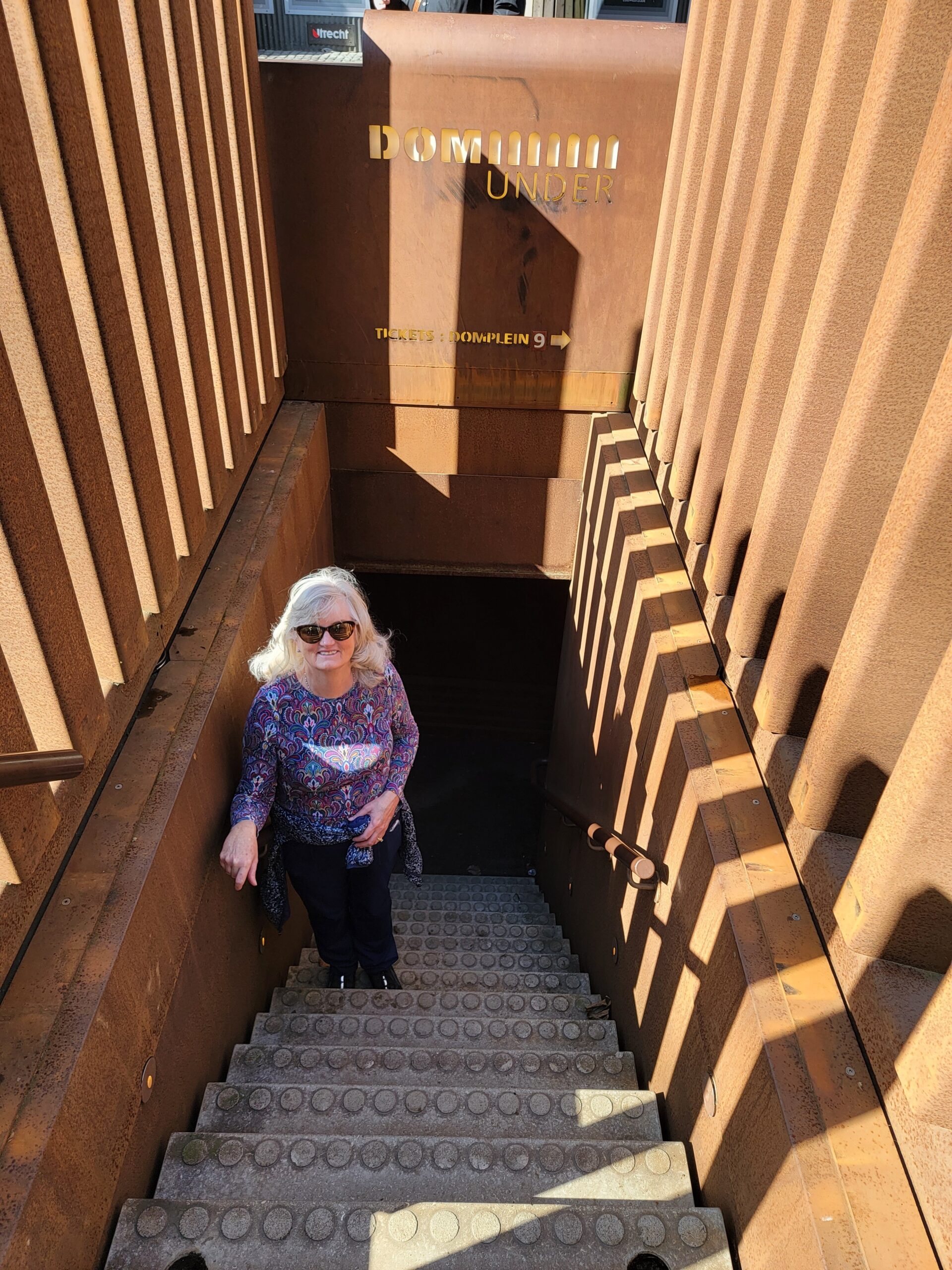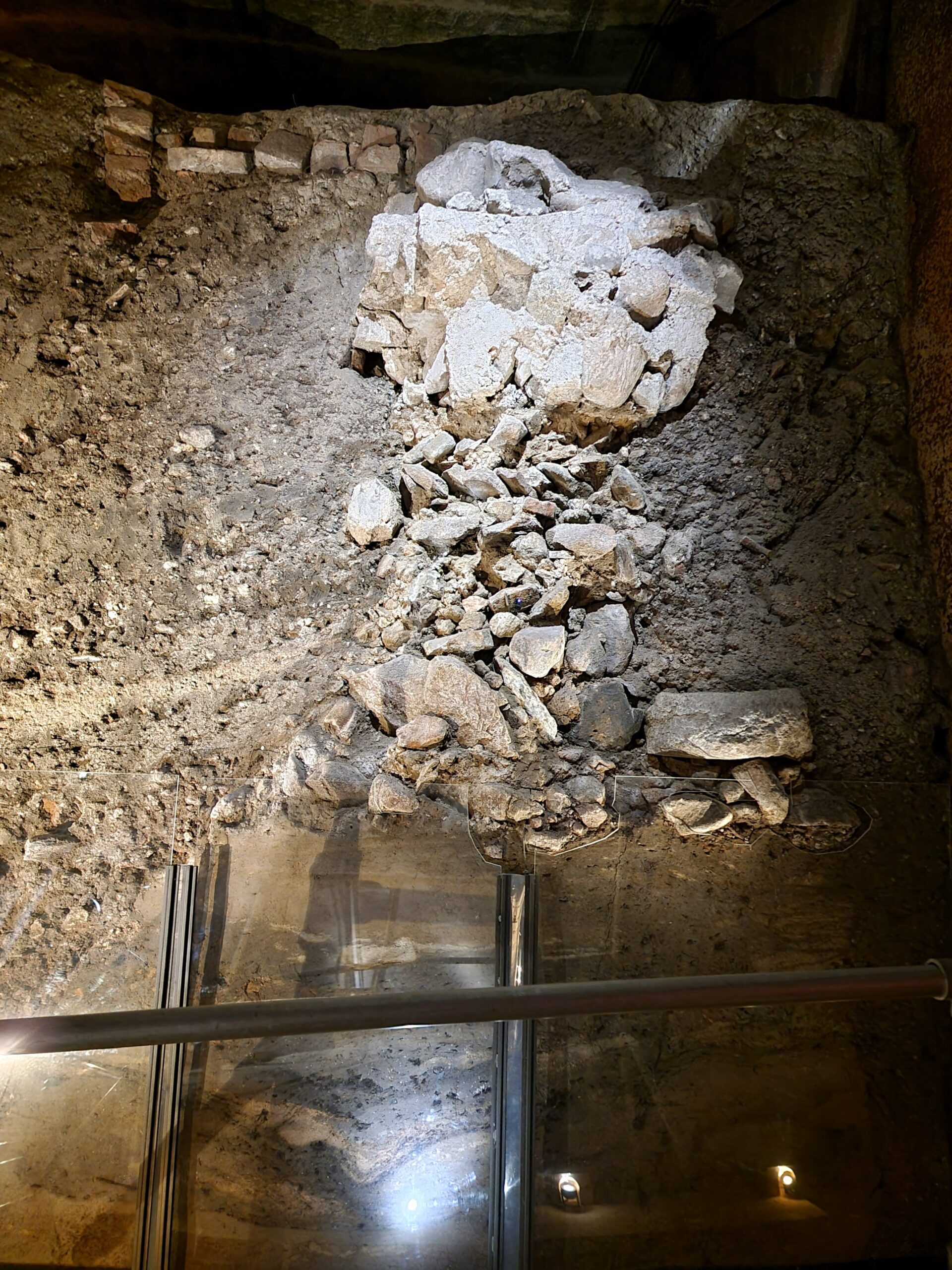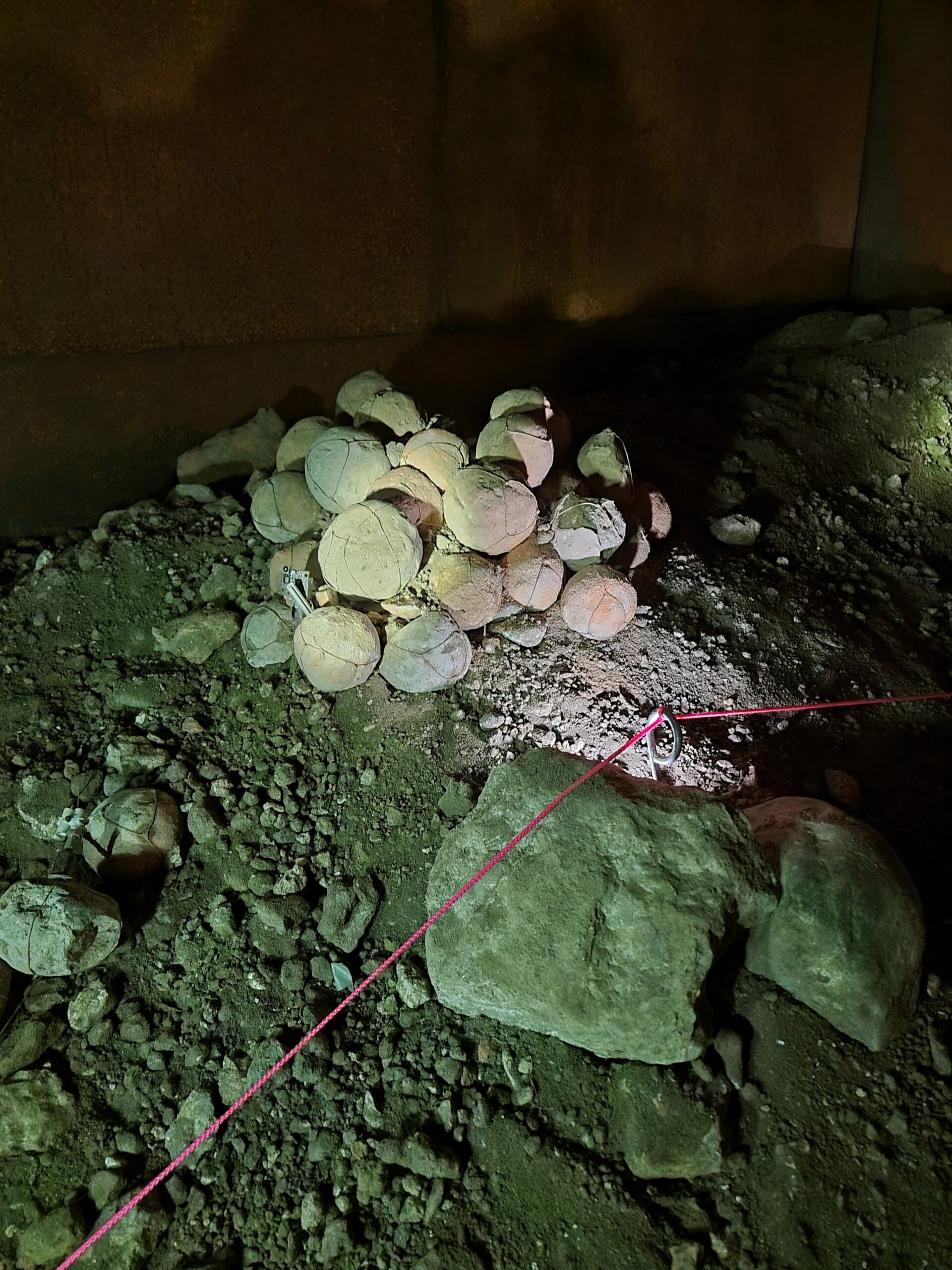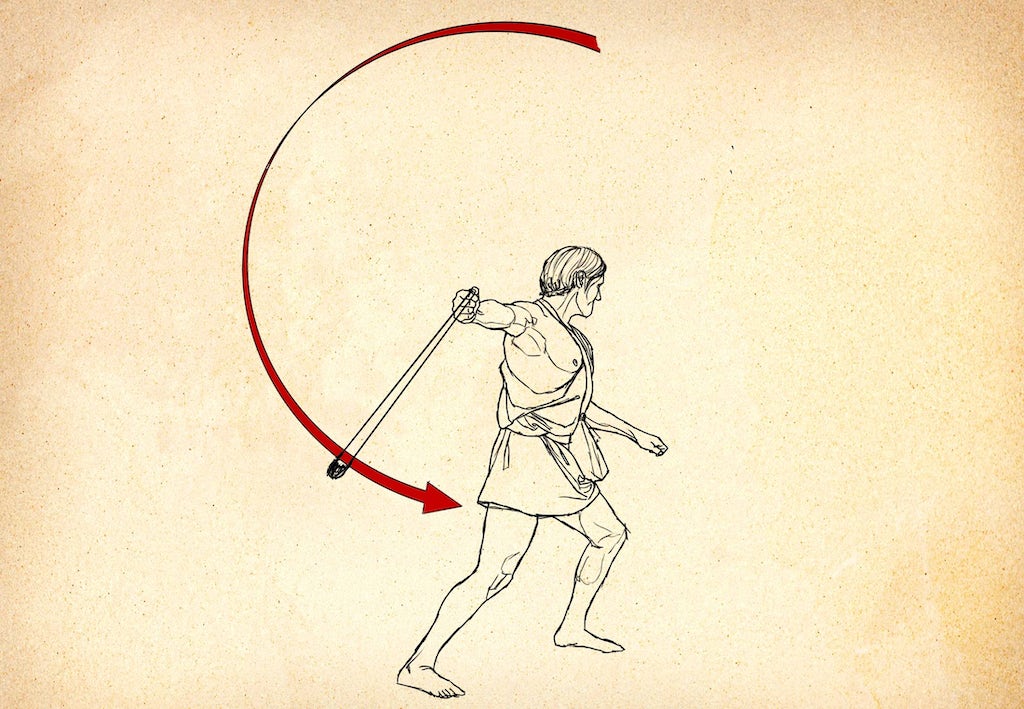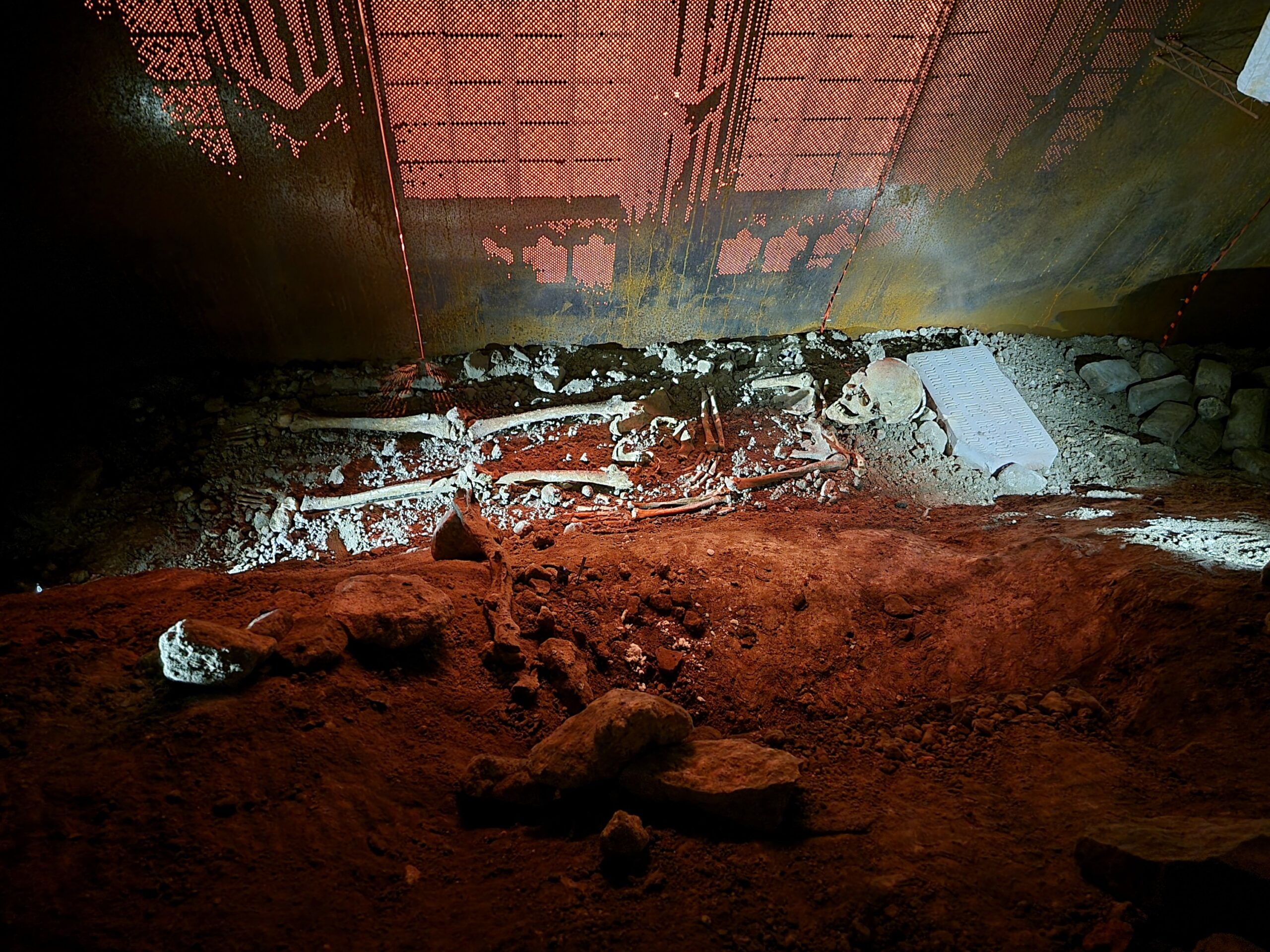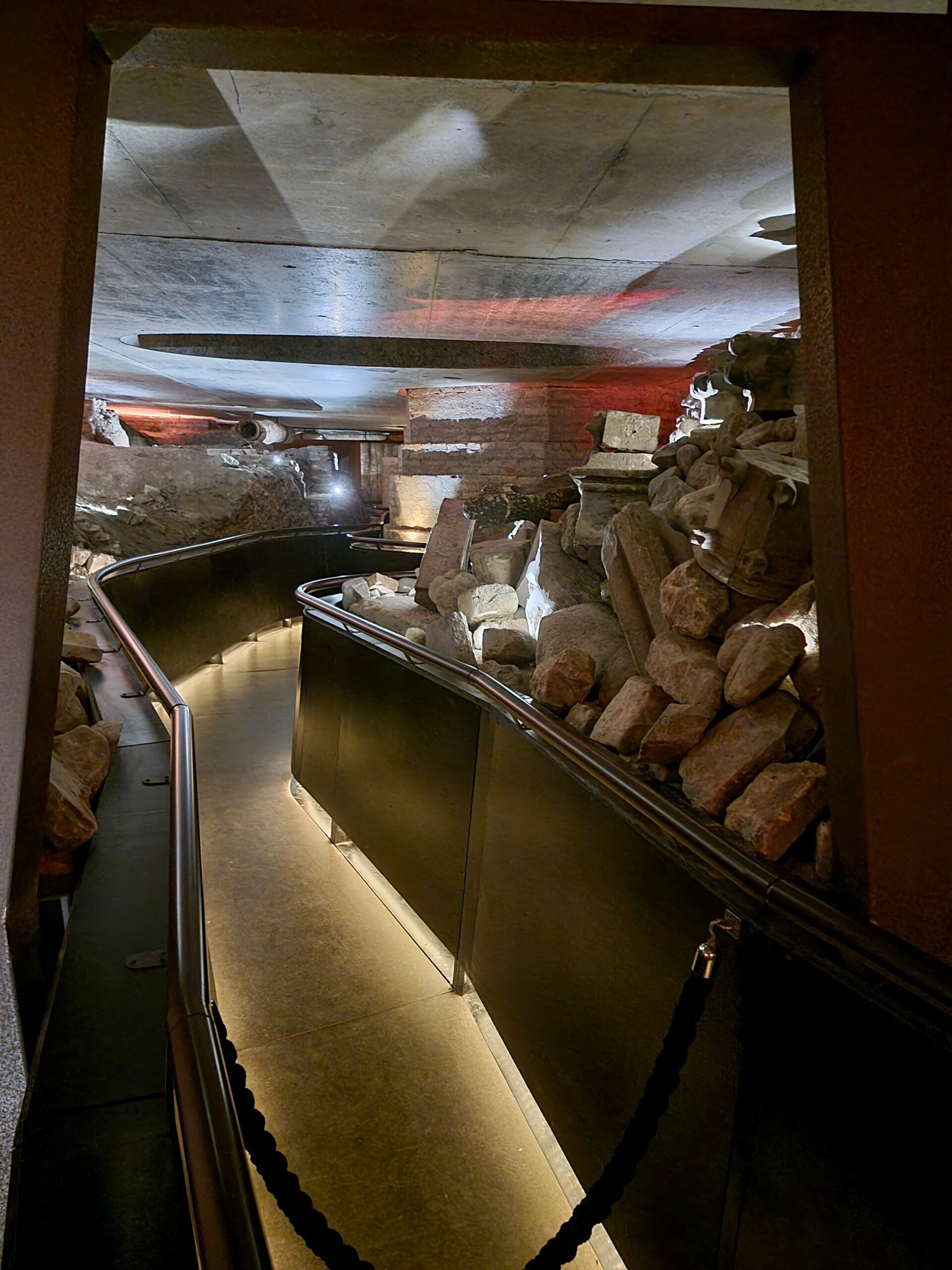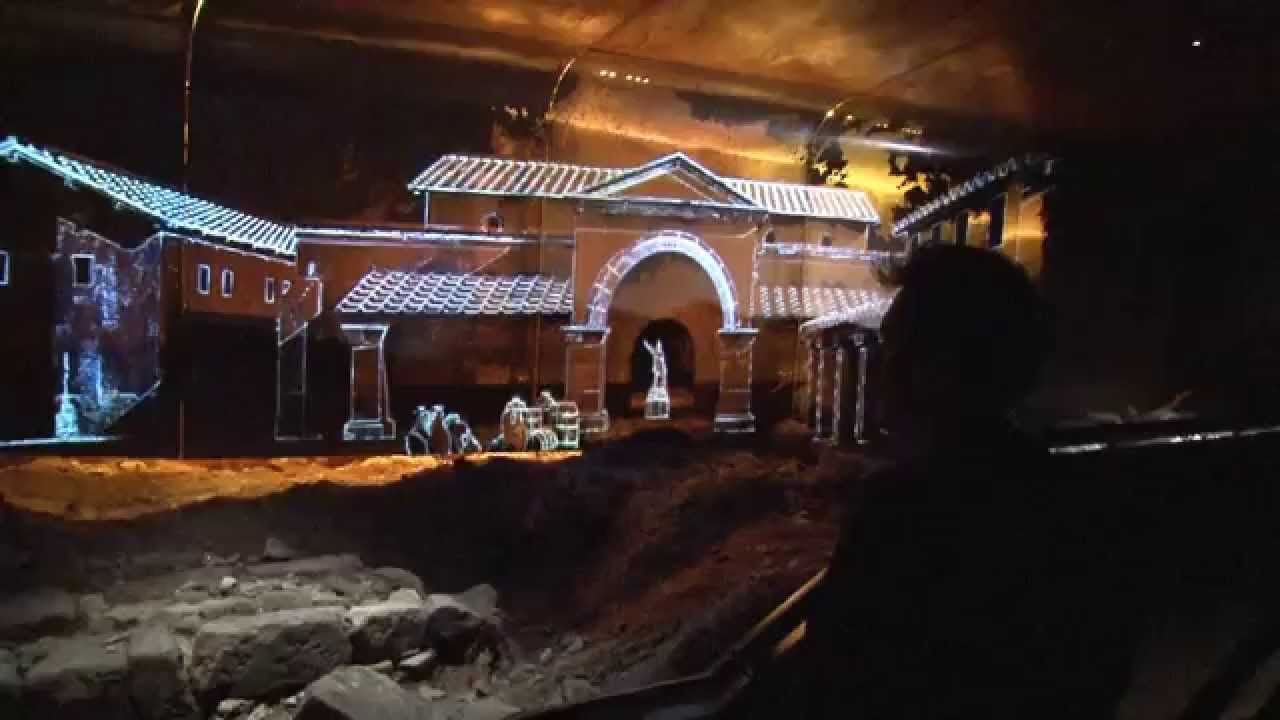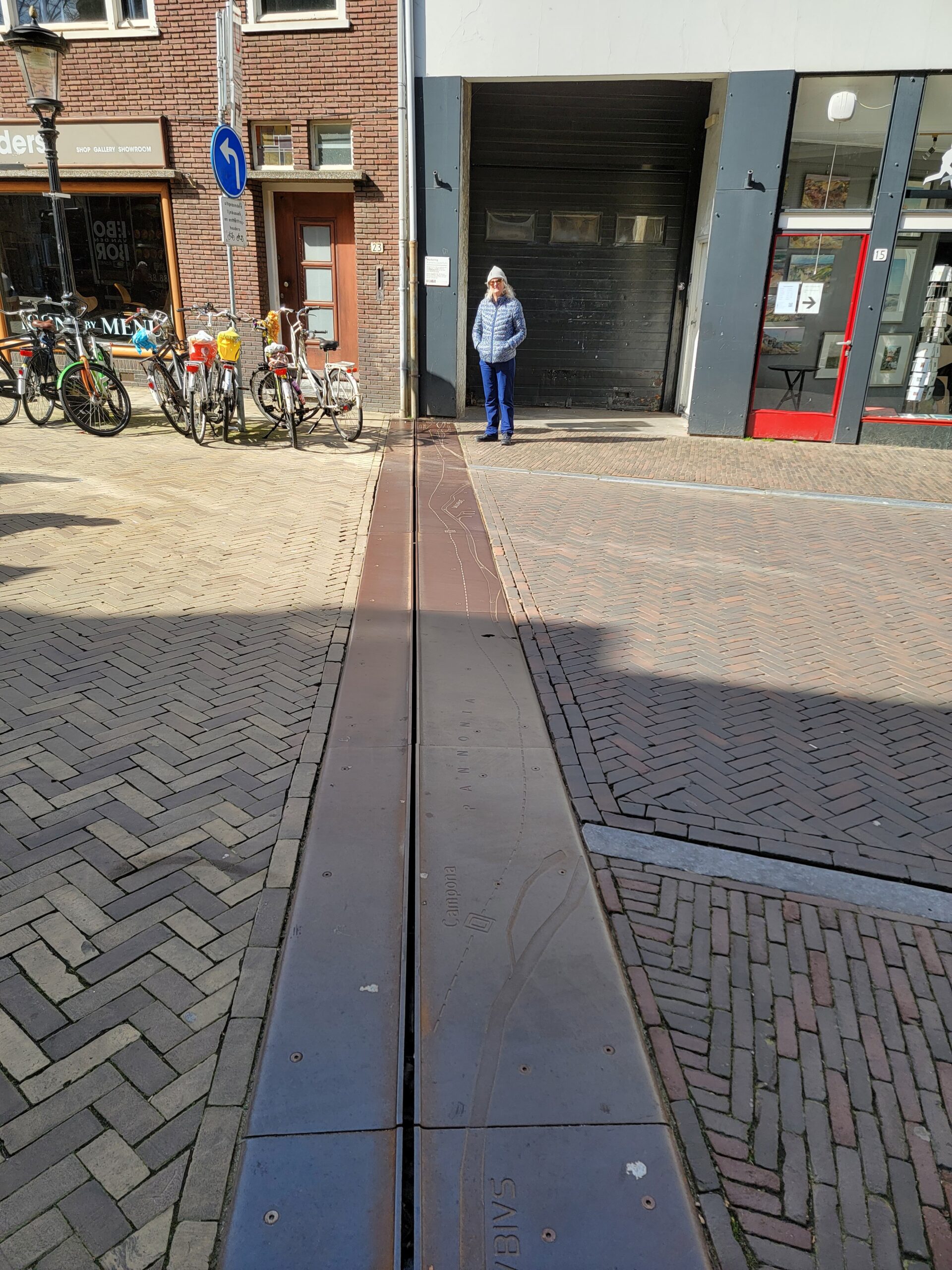Utrecht is a good sized city but definitely smaller than Amsterdam. It’s another Dutch city with canals….we’ve not seen one without canals as of yet, but this one has canals which sit much lower than any others we’ve seen, which gives this city a unique look.
The City center is known for St. Martin’s Church, also known as the Dom Church. Started in 1254, and built on the site of former churches, it wasn’t completed until the 16th century. At that time it was the Netherlands largest church.
Adjacent to the church is the Dom Tower, built from 1321 to 1382 The tower is currently covered in scaffolding, so I grabbed this photo from the internet. This is the highest church tower in the Netherlands.
The church and tower have an interesting history. Currently there is an open space between them, called the Dom Square. When the church was completed in the 16th century, the two were connected, as in this artists depiction.
In 1674, a hurricane hit Utrecht and took out the nave of the church, as well as hundreds of surrounding buildings. There were no funds to repair the church, or even clean up the site, so the ruins between the church and the tower sat there for 150 years, before they finally cleared the area and made it into the square it is today. The below depicts how the two structures are separated today.
There are ground markings in the square that show were the former church supports were located.
As well as the former church walls.
Even though the church is much smaller than the original, it’s still beautiful inside.
They have concerts on Saturdays, so we got lucky to attend one. The organ music was excellent, the Opera music I could have done without, but it was nice to hear the acoustics of the church. The echos each time the organ stopped seemed to go on forever. Love that!
You can visit an archeological site directly below Dom Square called Dom Under.
Here lie the remains of a Roman fort which was constructed in 45 AD. First we got a history lesson about the site. The fort was updated numerous times, but it retained it’s original walled outline, of which portions can still be seen today.
Here is Kim heading underground. Ok, I took this on the way out…just play along.
You get an audio guide with a “smart flashlight”. You point the flashlight at these little objects and the audio guide is supposed to start. It’s a bit wonky, and you have to be at just the right angle to get it to work. It would have been better if it was just numbers you keyed in. The below is a cross section of 2000 years of debris, with the center portion being a building support of some type.
This was the base of one of the fort walls. The inside part of the wall was nicely cut to form an even surface, while the middle of the wall would have been filled in with rocks and dirt, and even some pottery as evidenced in the photo.
These are Roman stone sling bullets that were launched with a “slingerkogel”. Yeah, I’ve never heard of it either.
This is what a slingerkogel looked like.
They found several bodies buried under the Dom Square. Several are still buried in tombs you walk by. Great fun for the kiddies!
A view of the walking area after everybody has cleared out. It gets pretty crowded, but thankfully they limit the number of people allowed in at one time.
There is a large screen in the space that first showed a brief video regarding the Roman fort. About 5 minutes later, you could hear thunder, and everybody was ushered back to the screen. The second video was a depiction of the storm of 1674 from inside the Dom Church, showing what it likely looked like during the storm. They did a pretty good job on this, particularly the audio, which is something I find particularly important for drawing the viewer in.
Back on the surface the city has installed identifying markers to show you exactly where the original building walls of the Roman fort were.
They are depicted by these steel plates crossing the street. I love that they went out of their way to honor the Roman history or the area!
Up next, one more post for Utrecht, covering the Sonnenborgh Musem and the Rietveld Schroder House.

